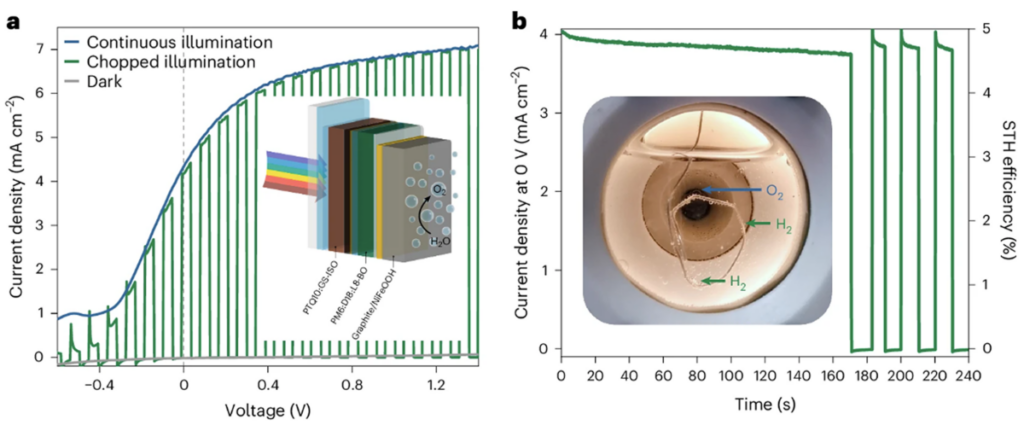A research team of two London universities has developed a multi-layered device that tackles the instability of organic materials in water to promote their use in direct solar hydrogen generation. Monolithic Tandemanodes made by the team achieved a solar-to-hydrogen efficiency of 5%, a record in organic photo-electrocrochemical device performance.
A team of researchers from Imperial College London and Queen Mary University of London have developed a method to utilize solar energy for hydrogen production.
In the research paper “Improved oxidation of solar water and non-supported water split with the help of graphite secure bulk hetero junction organic photoactive layers“Available in the magazine Natural energy, The scientists said that organic materials such as polymerde donors and non-Fullereengactors have a “enormous potential” in devices for direct solar hydrogen generation. It will further emphasize that their use in direct devices for water splitting has been limited so far, due to their instability in water and recombination losses on the interface with catalysts.
In order to tackle the instability of organic materials in water, the team developed a multi-layered device architecture that has integrated a bulk heterojunction organic photoactive layer with a self-adhesive graphite plate, functionalized with an earth-stringful nickel-iron oxyhydroxide catalystsator.
The graphite was not only protecting the photoactive layer against demolition induced by water, but also maintaining an electrical connection between the catalytic converter and photoactive layer without any losses.
The new device, consisting of fully integrated organic anodes with bulk heterojunction PM6: D18: L8-Bo photoactive layers, achieved a photo steam density of more than 25 mA cm⁻² with more than 1.23 V versus the reversible hydrogen electrode for water oxidation. The design also appeared to prove operational stability for days, in contrast to earlier designs that were broken down within a few hours.
“Our work shows that high-quality, stable split of solar water can be achieved with the help of cheap, scalable organic materials,” said Flurin Eisner, Queen Mary University of London, who led the development of the organic photoactive layers during the project.
“Organic materials are very adjustable in terms of their properties, such as the light that they absorb and their electrical properties, which means that they can be an extremely versatile platform to build different ways to convert sunlight into fuels (such as hydrogen) or even chemicals, so that the natural photosynthesis in plants is explained.” “This opens exciting new roads for sustainable fuels and chemical production.”
The team then prepared monolithic Tandemanodes with organic PM6: D18: L8-Bo and PTQ10: GS-ISO photoactive layers, able to generate hydrogen from water and light without the need for extra electricity. The device achieved an efficient of solar-to-hydrogen of 5% in a photo-electrochemical arrangement with two electrodes.
The research paper says that this result emphasizes the potential of integrating organic bulk heterojunction photoactive layers for stable, non-supported solar water split and “free the road to efficiency, stable and non-supported solar hydrogen generation by cheap organic photoactive materials.”
Salvador Eslava, head of Academicus of the Study of Imperial’s Department of Chemical Engineering, said that the result was a record for the efficiency of solar-to-hydrogen in organic photo-electrochemical device performance. “The approach uses the advantages of organic bulk hetero junctions, which offer impressive photo currencies, photovoltages, abundant elements and the convenience of processing, and applies them to the electrodes of photo -electrochemical cells,” Eslava added.
The team is now planning to work on exploring improvements in material stability and scaling up technology for industrial use.
This content is protected by copyright and may not be reused. If you want to work with us and reuse part of our content, please contact: editors@pv-magazine.com.

